Mammoth Dunes: The People’s Champ
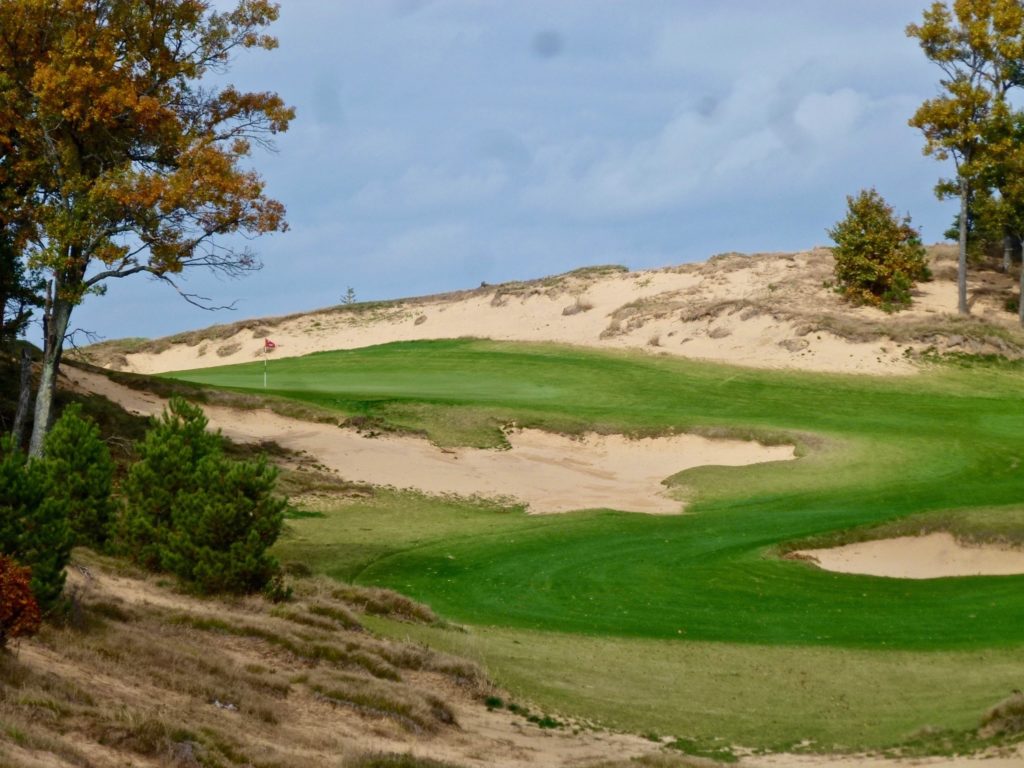
Over the last several years we’ve been witnessing a fairly radical development in golf architecture.
Ever since the most important golf tournaments shifted formats from match play to stroke play, architects and clubs and organizations have been concerned, and occasionally obsessed, with “defending” par. In modern golf par has become sacrosanct, an (admittedly arbitrary) construct needing protection from professional onslaught, while at the same time remaining frustratingly elusive to everyone else. Robert Trent Jones, in mid career, even promised in his designs a “hard par, easy bogey.”
Beginning in earnest with Gamble Sands (opened in 2014), David McLay Kidd has been attempting to turn that paradigm upside-down by building golf courses that don’t defend par but defend birdie. In this more enlightened experiment the architecture encourages and even beckons the golfer to make par, and bogey is virtually stuffed into your pocket before you walk to the next tee. Beyond that, if you want to score better, you’re going to have to think, work and act like a pro. Or so it goes.
Hard birdie, easy par.
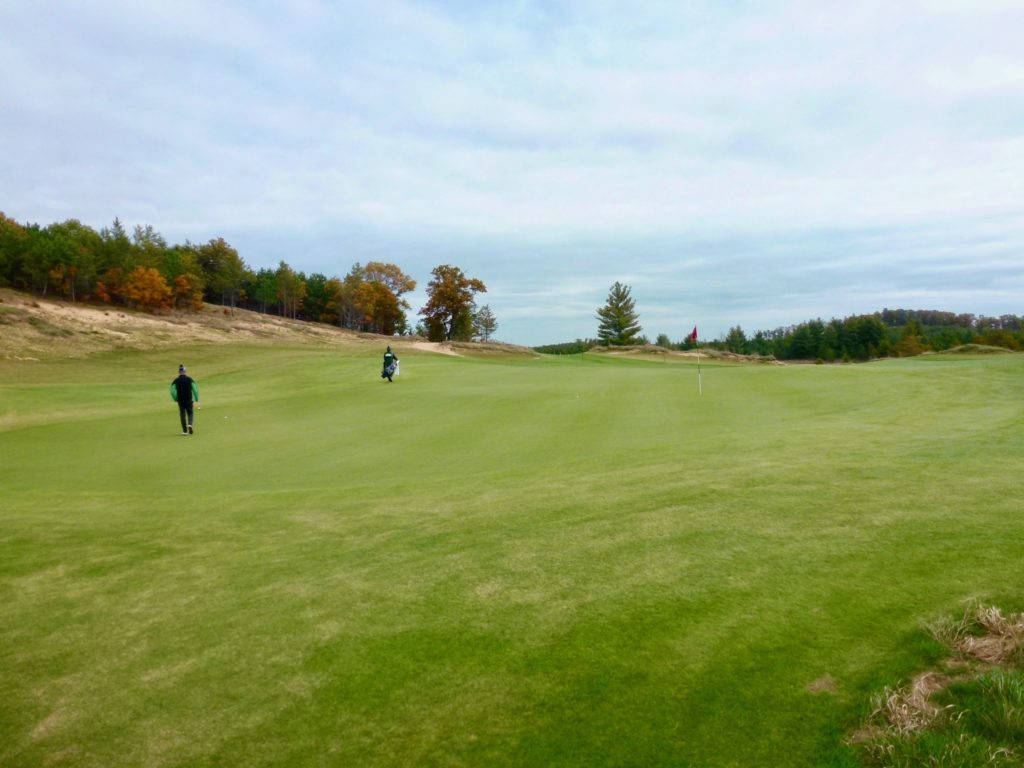

At Sand Valley’s Mammoth Dunes in central Wisconsin, Kidd achieves this by basically guaranteeing players will never lose a golf ball or even spend much time searching for them, no matter how erroneous the swing. The enormous fairways, 70-100 yards wide in most cases, are beyond accommodating, and the short-grass aprons and slight contour surrounding most greens help sooth and steer balls onto the putting surface. This is golf on greased wheels.
Residing within these colossal frameworks are smaller holes, or rather many differing paths of play from one extreme side to the other, each with varying degrees of advantage and disadvantage. Drives pulled down the left side of a fairway might have a perfectly good lie, for instance, but leave a resulting shot that must carry a bunker or a hurting slope. Tee shots edging farther right close to a central bunker, meanwhile, might yield an open, elevated view of the green and a sideboard. And so it goes.
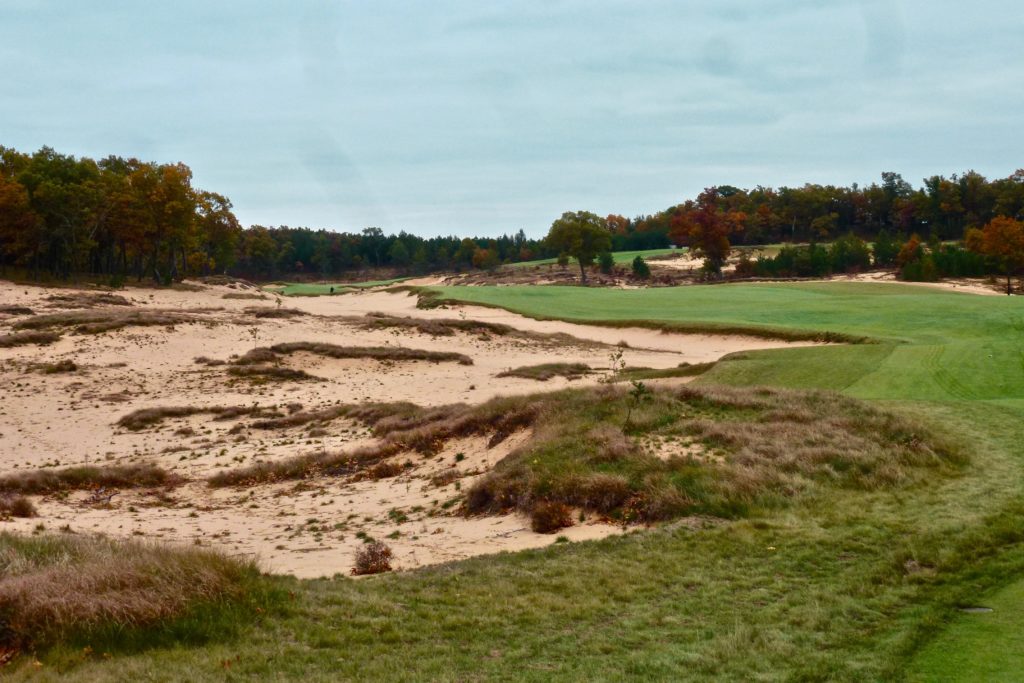
The par-5 3rd illustrates. The hole begins across a massive sand barren and the instinctive play is to drive the ball to the part of the fairway that appears the widest, to the right. A ridge there, however, kicks the ball farther right and into a large depression, leaving a long semi-blind second shot just to get into scoring position for the third.
Decent drives hit across the center of the wash achieve an upper level position and a go/no go decision, while aggressive tee shots cutting across the longer left portion of the sand will have a much shorter, more direct avenue to attack the green. The fairway is enormous but not all sections of it are created equal.
The idea of building courses that are more player friendly than punishing is nothing new, and architects have talked from the beginning of time about the desire to challenge great players while also keeping the game fun for the average golfer. Mammoth Dunes attempts to take this concept to its ultimate expression.
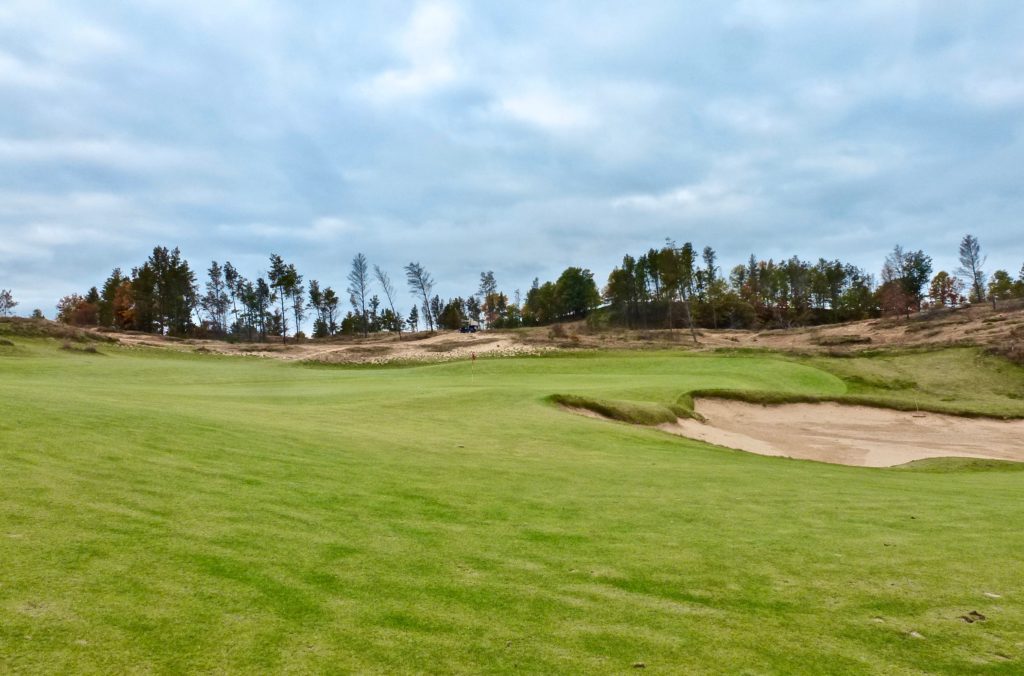
There’s no debate that the course — as well as this larger, sympathetic viewpoint of golf — is entertaining. Mammoth Dunes is one of the most singularly breathtaking golf experiences in America, a woodland adventure with holes that slice through pine forests and traverse up and down large, prehistoric sand dunes and plateaus. The sense of rugged wilderness is inspiring, and you feel fortunate to be playing an unbridled style of golf that matches the majestic setting.
Furthermore, players love it. Many come here and card their best rounds, and they laugh and reflect on it in the lounge, and drive home happy. What more could anyone want?
But I’m not sure Kidd has the brew quite in balance. The critique of Gamble Sands in Washington State, if there is one, is that the greens and surrounds shade toward the docile. Driving the ball there is a thrill, especially given the scintillating landscape and views, with generous width but also clear payoffs when hazards and diagonal carries are challenged and won. But the importance of driving and emotional bravado off the tee is disproportionate to the lesser demands of the approach shots and short game requirements.
Mammoth Dunes’ massive putting surfaces and significant ground movements are more on point, but with exception of holes like the aforementioned third — or the second or the ninth with compelling diagonal-degree options — driving the ball is almost completely stress free.
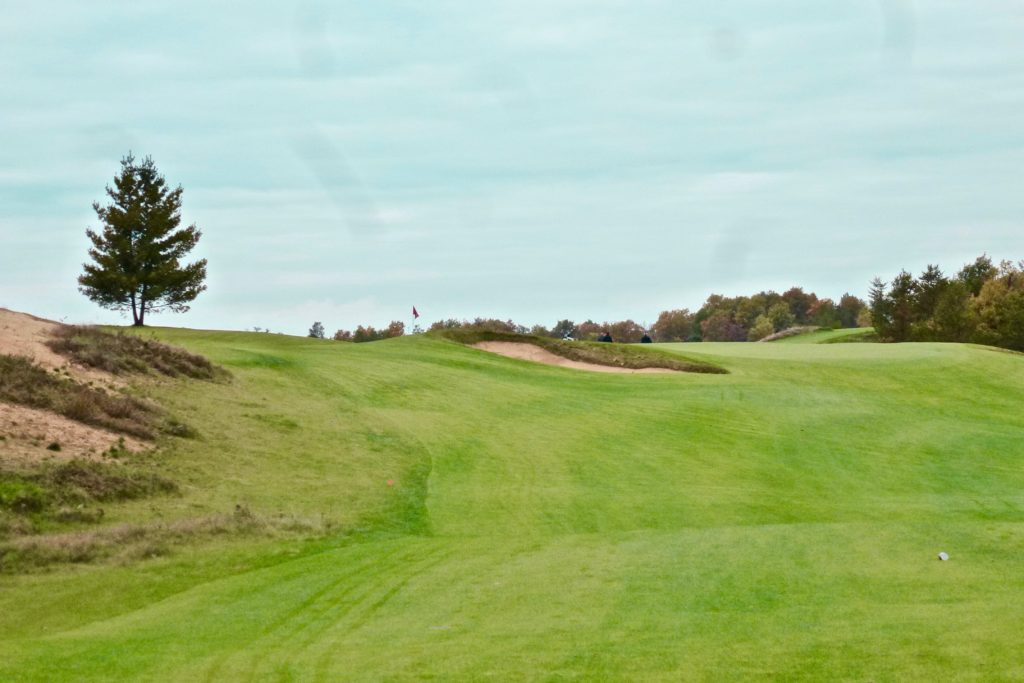
It may be an insignificant quibble, but there’s little in evidence to support the assertion that Mammoth Dunes poses much challenge at all to advanced players, that it even protects birdies. Low handicappers benefit from the same generosity of features as high handicappers, and because they’re often longer off the tee and still encouraged to swing freely, they frequently hit into the huge, helping greens with much shorter clubs.
Kidd has asserted that to make birdies and score low, drives must be played to specific, defended locations in the gargantuan fairways, and that angles and holes are only unlocked when players are on line and in position. I would argue the opposite, that there may be no course anywhere where it’s potentially easier to make birdie when out of position.
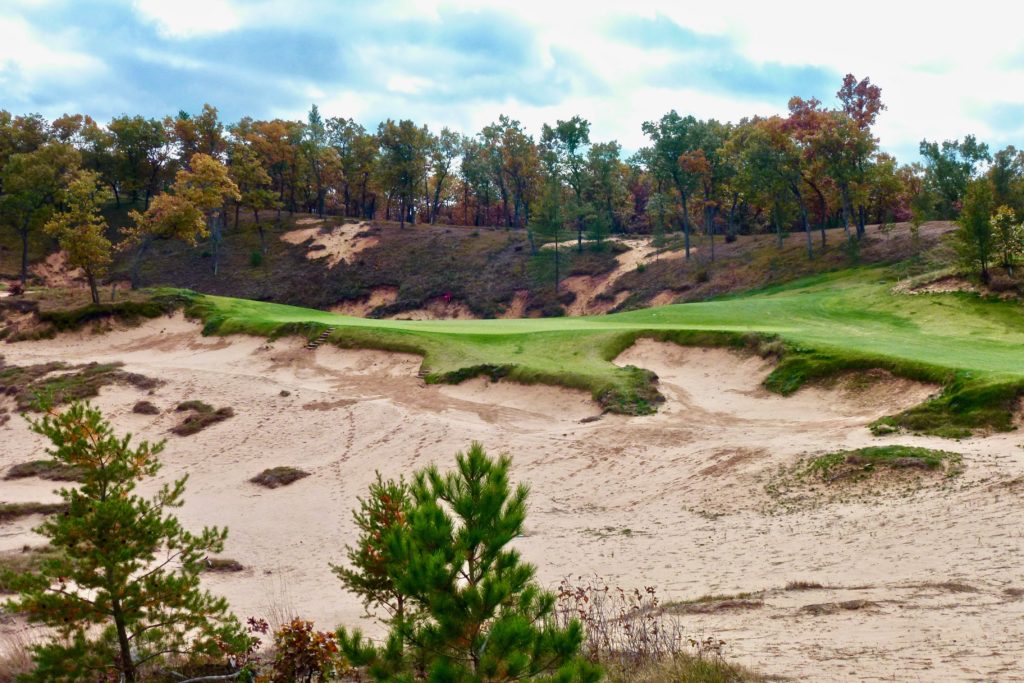
With such large greens and extreme latitude off the tee, the holes don’t always need to be attacked aggressively or precisely for success. The short par-4 6th, a wonderful little hole, illustrates. From the tee the textbook strategy is clear — thread a higher risk drive as long as possible into a notch left of the green to get an unobstructed view down the axis of the shallow putting surface, or play a shorter club safely to the huge fairway short and right and face a semi-blind uphill approach over a chasm of sand.
But why take on the risk with the drive when the approach off the “safe” drive is just a wedge or short iron to a green that funnels everything to the hole? There are occasions, like a far left hole location, when driving up toward the green might be the worthwhile strategic play, but even then the math is not definitive.
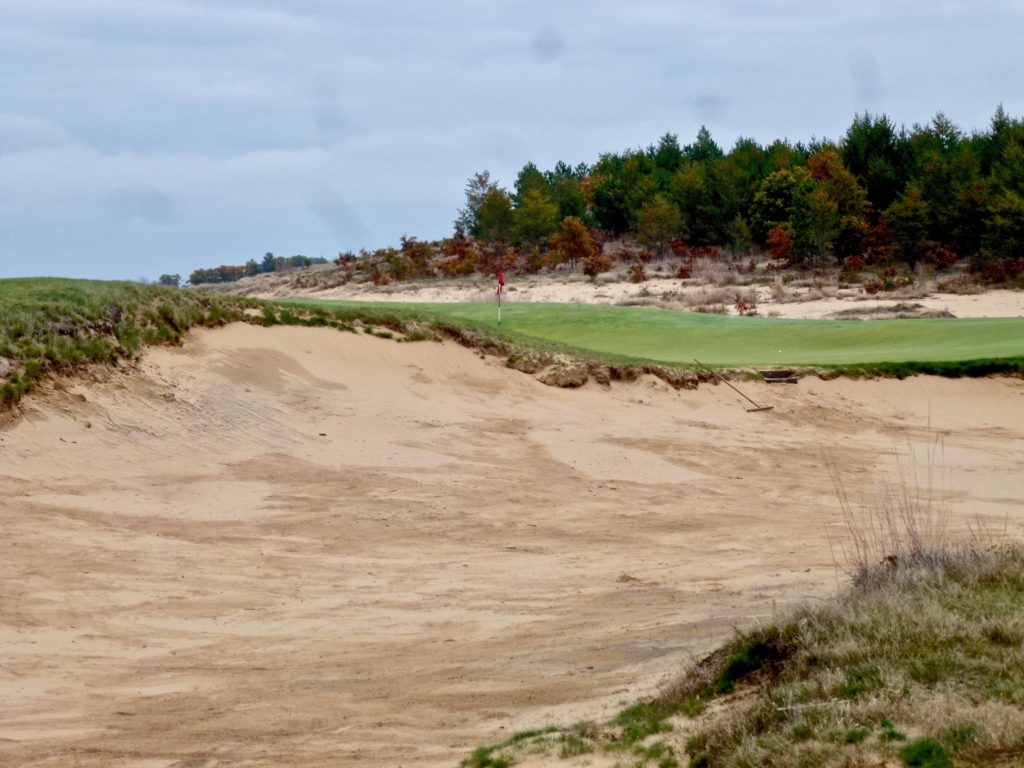


The conditions and firmness of the turf will undoubtedly have a major impact on scoring at Mammoth Dunes, and surely there’s a level of nuance built into the design relating to pin positions and tee combinations that only the very best players will be looking to decipher, a true course within a course. But players who can’t or don’t care to crack the code are still even money to play under their handicaps.
I actually think the Sand Valley course does a better job than Mammoth Dunes at offering enough space and flexibility to swaddle a spectrum of handicaps while still requiring a high degree of intellect and tactical exactitude to score well. Fewer are likely to shoot a career round, but those who do will know they earned it.
But what does it matter? Mammoth Dunes unapologetically tilts the architecture in favor of the golfer — that’s the point, and it’s a fairly addictive one. It’s probably the most enjoyable course in America on which to hit poor shots and play bad golf. It would take days, weeks, maybe years to discover all the places you can hit and still find your ball.
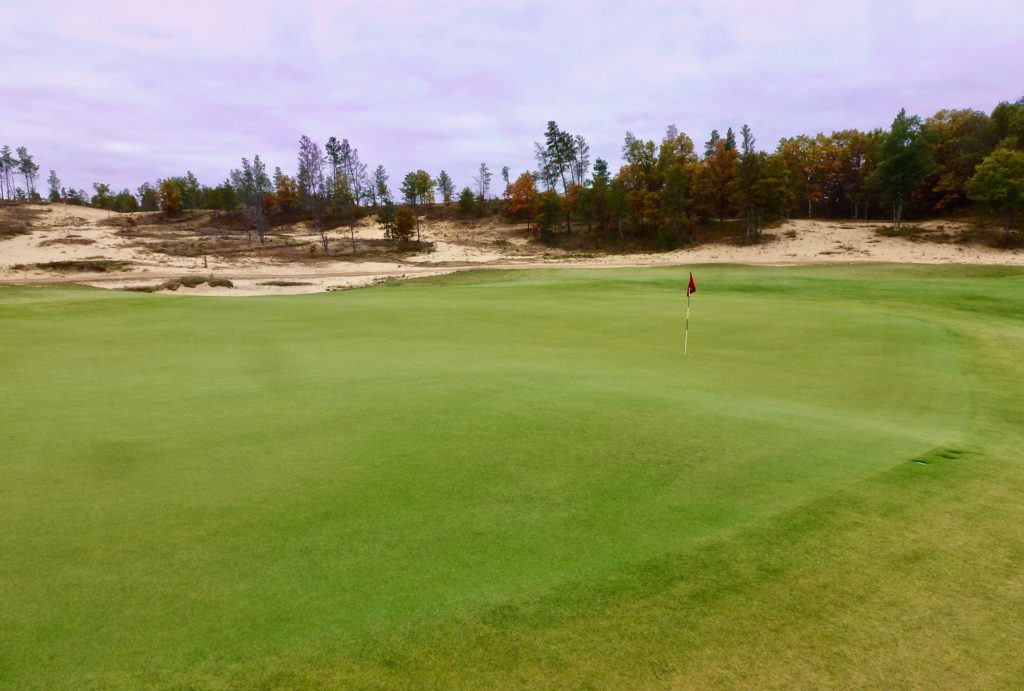
As much as any other architect today, and probably moreso, Kidd seems willing to explore the outer edges of what’s possible in golf design. That he’s already reversed direction more than once in his career demonstrates at the very least the courage to be self-reflective, to drive into unknown territory. This restless searching and the willingness to pursue a conviction (often against a critical wind) is his artistic gift, and it makes him one of the most intriguing and possibly important designers going forward.
Most golfers have zero concern that Mammoth Dunes isn’t challenging enough, or in the right ways. It is intended to be empowering, enthralling, fun — not a report card. The course is a punchers paradise that has provided a resounding solution to a problem whose intensity we’d not previously measured. Mammoth Dunes is about deliverance, a fantasy of landforms and space, an emphatic promise of grace and prosperity.
I’d fly across the country for that. Wouldn’t you? (94)
Rome/Nekoosa/Wisconsin Rapids
Architect: David McLay Kidd
Opened: 2018
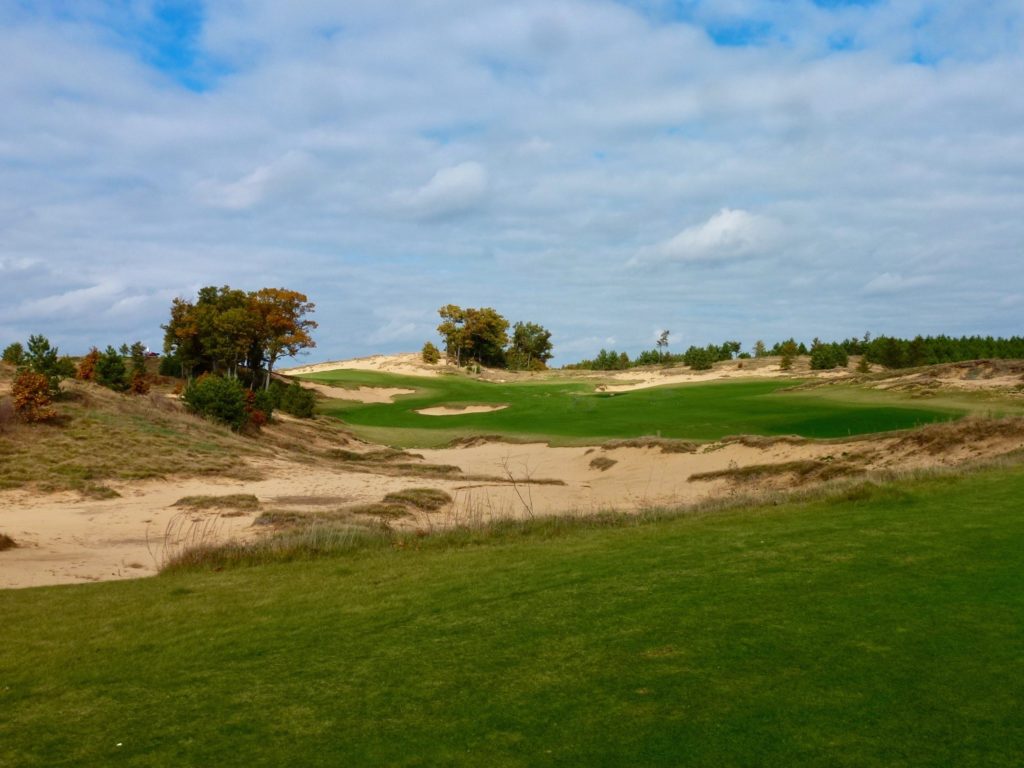
One Reply to “Mammoth Dunes: The People’s Champ”